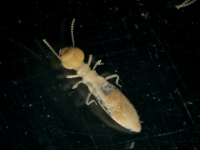CONTROL OF TERMITES WITH PLANT GROWTH REGULATORS
In the Decade of the years 90, began in Spain the use of regulators synthesis of Chitin as active materials in termite control.
From that date, have been marketed two substances for this application. And there is also evidence of the emergence of new molecules used in other countries.
It is clear that all of them have been carried out laboratory efficiency studies that guarantee their use in anti-thermal treatments. But nevertheless, results in practice are far from those predicting laboratory data in terms of time needed for control, possible reinfections, bait consumption, etc. In Vitro trials with colonies from field captures, may not be representative of how the terms act in their natural habitat. They are a quick and very guiding method, but that nevertheless, should be taken into account with caution and corroborated with other field trials.
At the time of undertaking an intervention to control a termite problem, it is clear that there are a number of factors that have an important influence to achieve the success sought. This incidence is independent of the active IGR material used in the treatment.
Climate factors are very important in determining the activity cycles of these insects. Depending on them, treatments may lengthen or shorten over time. You also have to keep them in mind when certifying the completion of them.
Then the installation of the stations is also essential. We've seen the termes feed on unimaginable substrates. They are able to destroy books with inks, crossing tail lines, Plastics. Even sometimes, the plastic wrappers themselves have been used as control stations, in places where the conventional box cannot be placed for lack of space. However, as is apparent from the trials, the presence of plastic material, even inks, and in the presence of alternative food, can cause insects not to colonize or abandon bait.
Cellulose in powder form is the substrate with the highest desiredness to use in the formulation of baits impregnated in chitin synthesis regulators.
As for wood species, poplar is the most appetizing for insects.
It is therefore vitally important to have a correct and as broad a diagnosis as possible in terms of content and views (Constructive, environmental environment, biological pest, Chemical, etc.) to be taken into account.
At last, considering everything exposed, it's necessary, adopt a protocol of action that guarantees the quality and professionalism of the termite control specialist.


